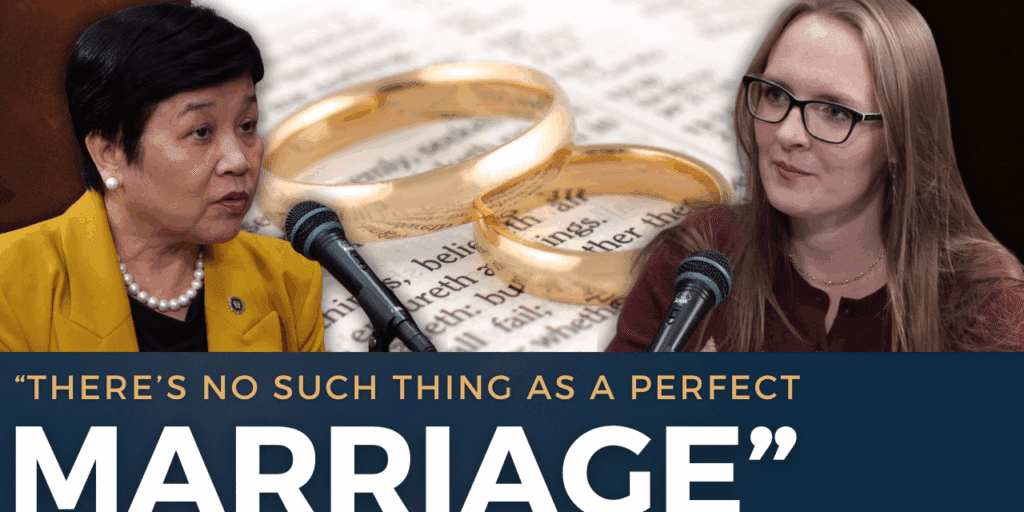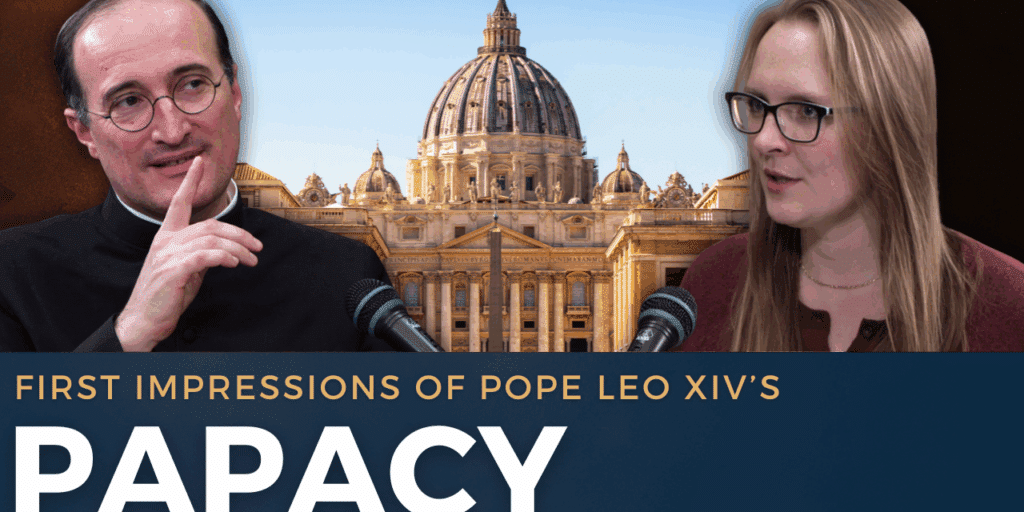Resurrection of Jesus, America, and the World
Khristós anésti! – Alithós anésti! Christus surréxit! – Surréxit vere!
Christ is risen! Indeed, He is risen!
These words, given above in Greek, Latin, and English, are the traditional Easter greeting and response, exchanged for centuries by Christians all around the world. Within these few words we find succinctly expressed the central mystery and message of the Christian faith – the historical reality of Christ’s resurrection.
It is easy to imagine the confidence and joy with which the first generation of Christians – some of whom may themselves have seen the Risen Christ with their own eyes – exclaiming to one another as they celebrated those first Easters after Christ’s ascension: “Christ has risen!” “Indeed, He is risen!”
May it be the case that we, too, exchange this Easter greeting with our family and friends with no less confidence, and no less joy!

The Central Importance of the Resurrection
St. Paul is famously unequivocal in emphasizing just how crucial the reality of the Resurrection is for Christians. Without the Resurrection, he states in 1 Corinthians, the entire Christian message collapses.
“For if the dead are not raised,” he writes there, “then Christ has not been raised either. And if Christ has not been raised, your faith is futile; you are still in your sins. Then those also who have fallen asleep in Christ are lost” (1 Corinthians 15:12-19).
The Catechism of the Catholic Church echoes St. Paul, noting that the historical reality of the Resurrection is “the crowning truth of our faith in Christ, a faith believed and lived as the central truth by the first Christian community; handed on as fundamental by Tradition; established by the documents of the New Testament; and preached as an essential part of the Paschal mystery along with the cross” (no. 638).
Without the Resurrection, Christ might have gone down in history simply as another great moral teacher. But with His resurrection, everything changes: He proves Himself to be God incarnate and overturns the dominion of sin and death. While prior to Christ’s coming it had seemed as if Satan and sin had won, Christ’s resurrection exposes the mirage. Death is not the final word! “O death, where is your victory? O death, where is your sting?” (1 Corinthians 15:55)
As St. Paul goes on to state in 1 Corinthians 15, “But Christ has indeed been raised from the dead, the firstfruits of those who have fallen asleep. For since death came through a man, the resurrection of the dead comes also through a man. For as in Adam all die, so in Christ all will be made alive.” That is to say, with His resurrection, Christ turns the tables: the most terrifying of all of Satan’s inventions – death – becomes the very means by which Christ restores the entire human race to life.
Overturning Roe: An American Resurrection
As we celebrate this Easter, I cannot help but think with joy of how our country has just undergone a kind of resurrection of its own. For five decades, the United States lived under the rule of sin and death. Our ostensibly “free” nation, whose founding documents proclaim the “equality” of all, lived under a notorious U.S. Supreme Court decision that permitted the wanton slaughter of the weakest and most innocent among us. Under this regime, tens of millions of innocents died.
“No greater love has any man than this: to lay down his life for his friends,” Christ states in the Gospel of John (15:13). For five decades, countless pro-life activists lived out these words, dedicating their lives to overturning this horrific decision, so that others might live. Turning their backs on lucrative careers and a comfortable life, they instead single-mindedly pursued justice.
So many who gave everything in this way to overturn Roe never lived to see that glorious day come. And yet, their sacrifice was not in vain.
In the Gospel of John, Christ assures us, “Amen, amen, I say to you, unless a grain of wheat [a seed] falls to the ground and dies, it remains just a grain of wheat; but if it dies, it produces much fruit” (12:24). All those acts of self-sacrifice made by pro-life activists over the decades were like seeds that were sown in the dark earth. Even if these activists never lived to see these seeds spring into life, the seed of their sacrifice lay dormant in the earth, awaiting the coming of life-giving rains.
This is the deep reality exposed by Christ’s death and resurrection, i.e., in a plot twist that must have infuriated Satan, Christ showed us that death, willingly embraced out of love for the other, is the very gateway that leads to resurrection and life. The very thing that Satan thought had finished us, becomes the means of our salvation!
It is true that sometimes one might be called upon to literally sacrifice one’s life for another, and thus to mirror Christ’s great act of self-sacrificial love. However, most of the time what we are called to do instead is to sacrifice some part of ourselves in a kind of mini-death: transcending our egos or petty selfish desires, in order to learn to treat the other as a second self. This, as Christ’s life, death and resurrection shows us, is the very essence of love.
Through their acts of love, our nation’s pro-life heroes participated in Christ’s great resurrection, and brought about a kind of resurrection within our nation. For the first time in decades, many states no longer permit the killing of preborn children for almost any reason. As a result, tens of thousands of preborn children will be born in the next year, who might otherwise have been killed, murdered within their mother’s womb. On the day Roe became law, a part of our nation died. On the day Roe was overturned, it was given a new lease on life.
Next Up: A Global Resurrection
And this may only be the beginning. That, at least, is my dearest hope and prayer.
A quotation included in the title of a recent article in The Guardian captures this hope perfectly: “If we can do it, you can do it.” The quotation is from Sean Carney, the CEO of the wildly successful 40 Days for Life organization, addressed to UK pro-lifers.
The whole article is about how U.S.-based pro-life groups are spreading hope to global pro-life activists that they, too, can reverse their nations’ course, and turn the historical momentum back towards life.
Of course, the United States itself still has a long way to go, with many individual states still permitting abortion, and hundreds of thousands of abortions still likely to occur every year. We have our work cut out for us here. Nevertheless, there is no doubt that the reversal of Roe is a watershed moment, showing that history is not on the side of the culture of death.
Naturally the Guardian’s journalists are far from thrilled that U.S. pro-lifers are encouraging UK pro-lifers to work confidently towards their own national pro-life resurrection. However, it is delightful to read just how worried UK pro-abortion activists are about the newfound confidence infused into the pro-life movement by this unexpected, but long-looked-for U.S. victory.
Neil Datta, the executive director of the European Parliamentary Forum for Sexual and Reproductive Health, for instance, tells the Guardian, speaking about American pro-life activists, “We can expect that the successes they have had in the US in these areas to be adapted to a UK context in the coming years.”
Indeed, we can! To achieve a global “resurrection” that protects preborn human life, this kind of international cooperation is absolutely essential. By sharing experiences, best practices, and legal frameworks, countries can learn from one another and work towards a collective goal of safeguarding the rights of preborn children.
And as the Guardian shows, this is exactly what is happening! As Katherine O’Brien, a spokesperson for the non-profit British Pregnancy Advisory Services, told the Guardian, “Our fear with Roe v Wade being overturned is not only has it inspired anti-abortion activists globally, but also that American anti-abortion organizations may have a pool of money they won’t need to spend in the US, and it will divert it here and around the world.”
Life leads to life!
Easter: The Culmination
Christmas and Easter are the two greatest feasts within the Christian liturgical calendar.
In some ways, it is easier to draw the connections between Christmas and this great movement for life. After all, within the Christmas scene we see God incarnate in the newly born child, coming in obscurity, humility, and poverty as the least among us. God Himself exposes the immeasurable worth of every human life, including the most vulnerable members of the human race – the preborn.
We know the ultimate reason for the Incarnation is Redemption. “From the first moment of His Incarnation the Son embraces the Father’s plan of divine salvation in His redemptive mission” (Catechism of the Catholic Church, no. 606). Hence, as with the Incarnation, Easter exposes the immense, unspeakable value of human life. “For God so loved the world that he gave his only Son, so that everyone who believes in him might not perish but might have eternal life” (John 3:16). The Son of God came to conquer death, so that we may have life in its fullness.
The one who, through the power of the Holy Spirit, was begotten in the womb of the Virgin Mary, now, through the same Spirit, is “the first-born from the dead” (Col 1:18), and by His own resurrection gives new life to all humanity. The one who accepted “death on a tree” thereby offers us life in its fullness.
As Pope St. John Paul II wrote in Evanglium vitae, “In the mystery of Christ’s birth the encounter of God with man takes place and the earthly journey of the Son of God begins, a journey which will culminate in the gift of his life on the Cross. By his death Christ will conquer death and become for all humanity the source of new life” (no. 102). In other words, Christmas is the beginning, but Easter is the culmination.
Furthermore, in his act of self-sacrifice, Christ gives us a concrete example of what we are to do, here and now. As Pope St. John Paul II wrote in a prayer in Evangelium vitae, reflecting on Easter and its relevance to the pro-life cause:
We too are called to give our lives for our brothers and sisters, and thus to realize in the fullness of truth the meaning and destiny of our existence.
We shall be able to do this because you, O Lord, have given us the example and have bestowed on us the power of your Spirit. We shall be able to do this if every day, with you and like you, we are obedient to the Father and do his will.
Grant, therefore, that we may listen with open and generous hearts to every word which proceeds from the mouth of God. Thus, we shall learn not only to obey the commandment not to kill human life, but also to revere life, to love it and to foster it.
Amen.
Human Life International
As president of Human Life International, Fr. Boquet is a leading expert on the international pro-life and family movement, having journeyed to nearly 90 countries on pro-life missions over the last decade. Father Boquet works with pro-life and family leaders in 116 counties that partner with HLI to proclaim and advance the Gospel of Life. Read his full bio here.







Amazing and beautiful message Fr. Boquet! Thank you for your kind, gentle and gracious words…” to revere, love and foster life.” Amen.
Dr. Mario